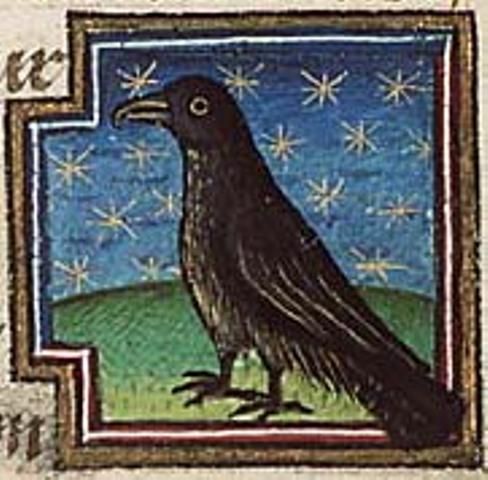















Medieval Celtic Manuscripts
A (Very) Brief History and Guide
As Rome fell and Europe burned, what we call the Dark Ages fell over the continent, the pursuits of art, learning, and leisure were more or less replaced by the very natural instinct for survival. This is what happens when the government infrastructure decides they'd rather go hide in their villas.
At any rate, this wonderful little age of ignorance was not without hope, particularly just outside the borders of the Western Roman Empire--when the libraries were in danger of being burned, some smart individuals made an effort to get their volumes out of town, and head for the first boat into the beyond. They went to two places--either to the Byzantine Empire, or to Ireland.
Now--the Irish at this time were brand new converts to Christianity, and had done so in a fairly peaceful manner. Moreover, as having never been part of the Roman Empire, they were no where near as effected by its collapse, except perhaps in trade. At any rate, to this relatively stable island came monks with manuscripts, who taught the Irish to replace their script with a Roman-based one. (Though no books remain of the pre-Christian period, there were more than likely books, though not of a religious nature; for more, see the druidism article, which covers this.) This lead to Irish being the one of the earliest vulgar (i.e. non-classical European) language to be written down.
At first, the Irish began copying the Latin gospels. They filled the pages with ornate, stylized men, animals, and plants, and highly detailed geometric designs--complicated images in bright, jewel-like pigments. This is what people associate with the Celtic manuscript, along with a certain type of lettering, called the Irish half-uncial styles, so named for the rounded features of the letters, as opposed to the pointed features of gothic and the skinny, straight letters of the roman style.
Of course, the Irish then went on to writing down their histories, laws, and literature. This love of writing and illustrating was then taken to Britain and Europe during the seventh and eighth centuries, when the Irish began working as missionaries and scholars. It was Irish monks who Charlemagne turned to in order to reintroduce literacy to Europe, and it was Irish monks who introduced their style of manuscript production to the Britons and Saxons, particularly on Lindisfarne.
And so, the Welsh began writing again, at first for their kings--writing down laws, poetic praises, histories and genealogies. Later, they turned to full anthologies, covering history, fiction, myth, poetry, medical texts, and so on, in a single volume.
In Scotland, most texts are of a later date; the reason, I'm not sure, though it is interesting to note that Irish and Scottish Gaelic did not diverge until the 16th or 17th centuries, which may have had some influence. However, I really am not sure on that.
The interesting thing about the Celts as a group, though, is that they had a rather curious habit of naming their manuscripts. Usually they were named after places, but also after the color of the leather cover, or after the owner, or after the purported author of the text. This idea of a named manuscript seems the exception on the continent, but not always so in the British Isles.
Medieval Celtic manuscripts are best thought of for their ornate decorations, unique in style; however, it should be noted that not all manuscripts followed this style, but instead were mostly text. This has not changed the popular perception, of course. The Book of Kells regularly draws so many visitors to Trinity College, that it is a main source of income for the university library.
Unfortunately, thanks to the Vikings, there is a gap between the occasional survival from the seventh or eight century, and those manuscripts of the twelfth century and later--between the nineth and eleventh centuries, the British Isles saw many manuscripts burned during the raids and settlements of the Danes and Vikings.
Irish Manuscripts
Welsh Manuscripts
Scottish Manuscripts
A good website collecting digital images of manuscripts can be found here: http://www.digitalmedievalist.com/urls/celtmss.html

Back to "M" | Back to JCE
Home
Mary Jones © 2003